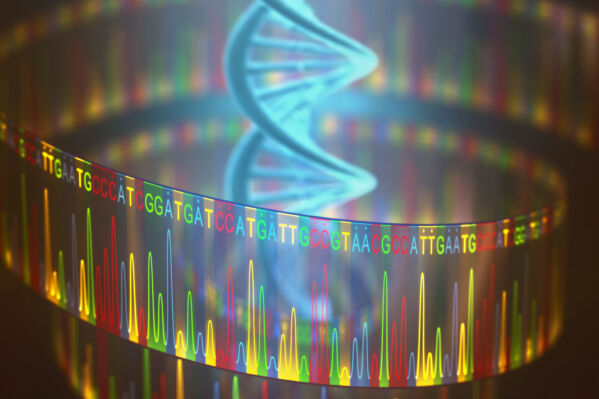Researchers have encoded the entire human genome into a “memory crystal” to safeguard our species in case we need to restart from the brink of extinction. This type of memory crystal disc is as tough as quartz, able to withstand cosmic radiation and preserve information for billions of years.
Even if this project ultimately fails and human civilization cannot restart or return, the device theoretically can still provide our genetic code to future intelligent beings as a historical reference, although it may take them billions of years to find it.
For over a decade, crystals have been the gold standard for durable data storage media. To be specific, this is a nanostructured glass disc developed by a research team led by Professor Peter Kazansky at the University of Southampton in 2014. This 360-terabyte data crystal can stably exist for 300 quintillion years at room temperature and only decreases in lifespan to 138 billion years when heated to 374 degrees Fahrenheit (equivalent to the generally accepted age of the universe). Additionally, it can withstand higher and lower temperatures, direct impact force of up to 10 tons per square centimeter, and prolonged exposure to cosmic radiation, making it still the most durable digital storage medium in the Guinness World Records. Considering the increasing concerns about the unreliability of today’s digital environment, this also makes it one of the preferred choices for securely storing electronic information.
Understanding this, Kazansky’s team recently began encoding the 3 billion characters of the human genome into a coin-sized memory crystal. According to the university, Kazansky and colleagues used ultrafast lasers to etch DNA code into the interior voids of the disc’s silicon dioxide, these voids being as small as 20 nanometers wide. While most traditional information recording tools (such as paper and magnetic tape) are two-dimensional, researchers encode information in the crystal in a way that “uses two optical dimensions and three spatial coordinates to write in the material,” technically described by them as five-dimensional (5D), meaning a “5D memory crystal.”
Inspired by the iconic golden record carried by the Voyager missions, this disc also includes a “visual key” to explain how to use it. It features illustrations of male and female humans, common elements like hydrogen, oxygen, carbon, and nitrogen, the molecular structure of DNA, and other potential necessary information required to constitute a person.
Kazansky stated in a statement, “We have learned from other studies that genetic material of simple organisms can be synthesized and used in existing cells, thereby creating viable specimens in the laboratory. The 5D memory crystal provides an opportunity for other researchers to build an eternal genetic information repository, so that in the future, complex organisms like plants and animals may be restored if scientific technology allows.”
Currently, the “5D memory crystal” encoding the human genome is stored at the “Memory of Mankind” archive in Hallstatt, Austria, a time capsule project located in the world’s oldest salt mines. If all goes well, it will be preserved until a day in the future when it may be needed. Of course, it is hoped that humanity will never have to use it.
It is worth noting that Kazansky utilized the “5D memory crystal” technology to store the Foundation Series novels by science fiction writer Asimov, and launched them into space aboard Elon Musk’s Tesla Roadster in 2018.

